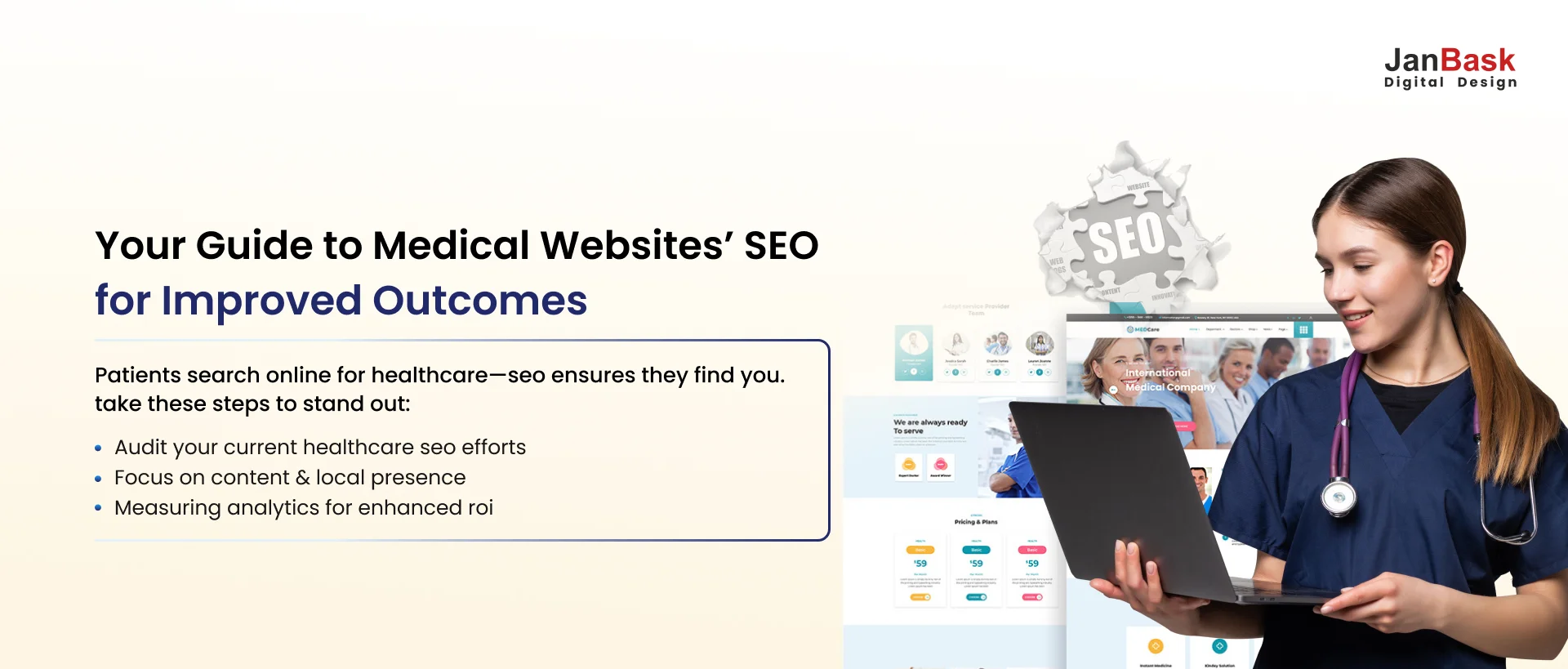
A clear healthcare marketing strategy is now the foundation of patient acquisition and retention. More people are turning to digital channels for information, shaping your organization's reputation even before a patient enters your facility. Surprisingly, 84% of consumers trust online reviews more than personal recommendations, making review management a critical factor in your success.
Healthcare organizations are also making greater investments than ever before to reach and engage patients. In the United States, healthcare advertising spending increased by 11.5% in 2022, placing the country first in the world. This surge demonstrates the industry's competitive nature and the importance of strategic, data-driven outreach.
This blog provides a clear roadmap from fundamental concepts to advanced strategies. You'll learn how to gain credibility, leverage digital transformation, and create a marketing strategy that speaks to today's empowered healthcare consumer.

Before you can create an outstanding marketing plan for healthcare organization, you must first understand the fundamental principles that distinguish this industry. Every successful campaign is built on these fundamental concepts, which include defining your approach, navigating regulations, and truly understanding your patients. Let's start by looking at what distinguishes healthcare marketing and how you can use these fundamentals to gain a competitive advantage.
A healthcare marketing strategy is more than just a campaign or a series of advertisements. It's a comprehensive strategy for attracting, engaging, and retaining patients by combining digital innovation with traditional outreach. This strategy ensures that your organization communicates effectively with those seeking care while always prioritizing patient trust and well-being.
Unlike general marketing, which is often focused on increasing sales and profit, healthcare marketing is founded on education, empathy, and ethical responsibility. The language is clear and reassuring, the goals go beyond transactions, and each message is designed to foster long-term trust between provider and patient.
Healthcare marketing operates under strict regulations and high ethical standards. Laws such as HIPAA and GDPR require you to protect patient data and obtain explicit consent before sharing any information. To avoid legal consequences and protect your reputation, ensure that all communications are accurate, transparent, and compliant.
In this field, ethical considerations are deeply embedded. You must avoid exaggerated claims, respect cultural sensitivities, and ensure that your messaging is truly in the patient's best interests. External factors such as economic shifts, public health crises, and rapid digitalization add a layer of complexity to your strategy, necessitating agility and careful adaptation.
Setting specific, measurable goals is the foundation of any effective healthcare marketing technique. SMART goals, specific, measurable, achievable, relevant, and time-bound, help you focus your efforts and track progress, whether you want to increase patient inquiries or improve satisfaction scores.
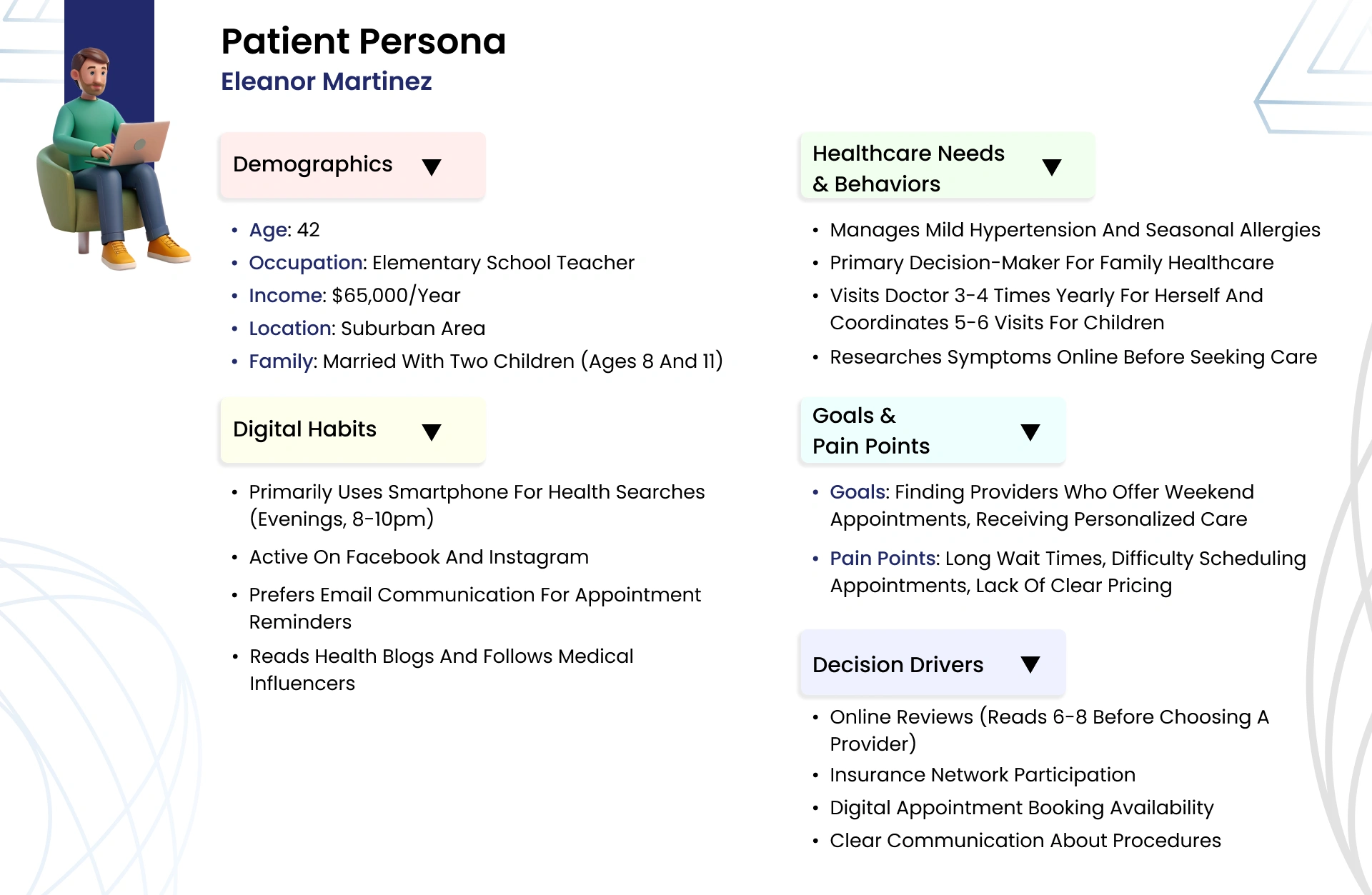
Understanding your audience extends beyond basic demographics. By creating patient personas, you can segment based on age, health needs, or digital literacy, allowing you to tailor your messaging and services for maximum relevance. Mapping the patient journey, from initial awareness to long-term loyalty, ensures that your strategy covers all aspects of the healthcare experience.

Now that you understand the foundation of healthcare marketing, let's explore how to build patient-centered marketing pillars.
Every successful healthcare marketing strategy is built on a foundation of trust, visibility, and effective communication. To stand out in a competitive field, you need more than just promotional messages; you need a strategy that shapes perception, meets patients where they are, and provides value at all touchpoints. Let's look at the essential building blocks that will support your healthcare marketing strategy.
Your brand is more than just a logo or a tagline; it is the sum of all patient interactions with your organization. Establishing credibility requires clear messaging, consistent visuals, and a dedication to patient-centered care. When patients trust your brand, they are more likely to use your services and refer you to others.
Reputation management is an ongoing process that ranges from online reviews to community involvement. Thought leadership, or sharing expert insights and guidance, establishes your organization as a trustworthy source of information. Long-term patient relationships are built on trust and expertise.

Reaching your audience necessitates more than one approach. A strong healthcare marketing strategy integrates both online and offline channels to reach patients wherever they are. Digital ads, print campaigns, local events, and community outreach can all help you reach more people and reinforce your message.
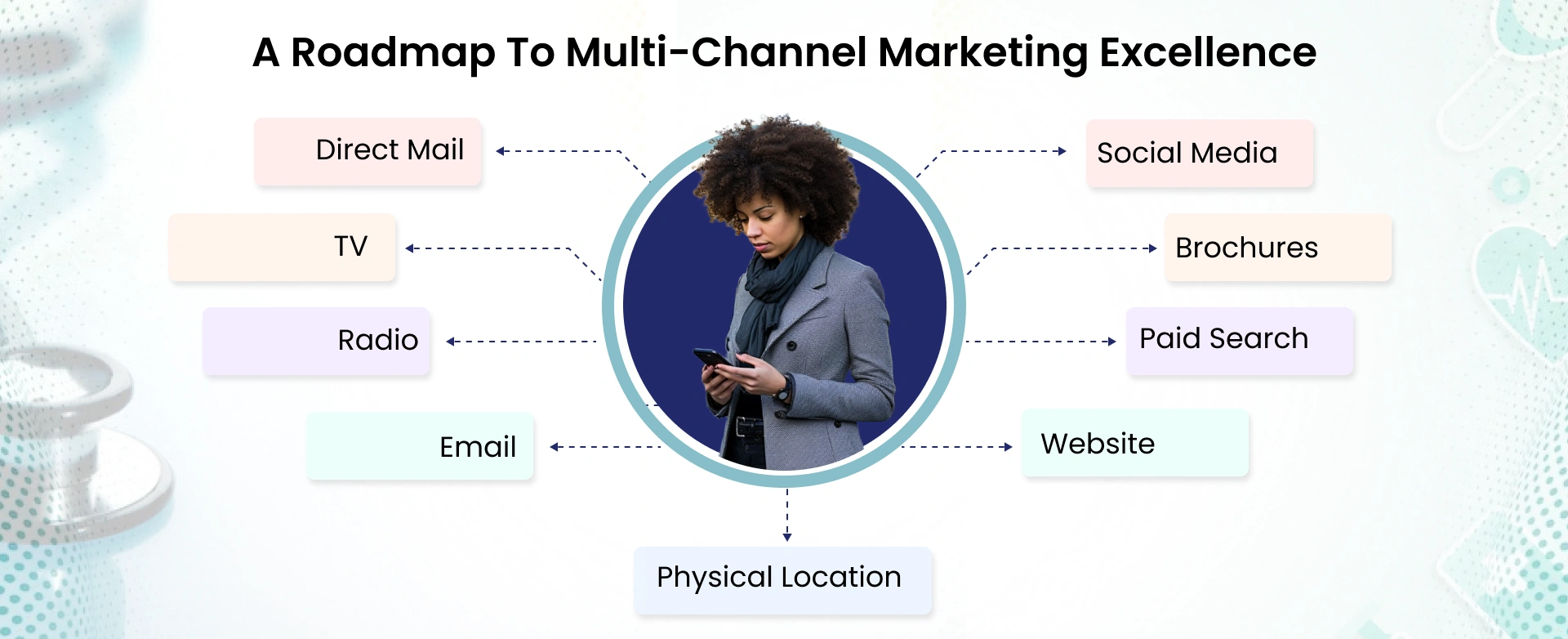
Combining these channels allows you to provide a consistent experience, guiding patients from their first encounter with your brand to ongoing engagement. The optimal mix is determined by your target audience, goals, and resources, but the key is to ensure that each channel complements your overall strategy.
Content serves as the link between your expertise and your patients' needs. Educational blogs, videos, webinars, and real-life patient stories not only educate but also establish credibility and loyalty. By answering common questions and addressing health concerns, your organization establishes itself as a trusted care partner.

Effective content marketing involves more than just creation; it is also about distribution. Sharing your materials via social media, email newsletters, and your website ensures that they reach the intended audience at the appropriate time. The more accessible and relevant your content, the stronger your relationship with current and prospective patients.
With these pillars established, it's time to leverage digital marketing techniques.
Digital marketing is the driving force behind modern healthcare marketing techniques, connecting you with patients at every stage of the journey. You can reach your target audience, build credibility, and foster long-term relationships by mastering a combination of search, paid, social, and email tactics. Let's look at the techniques that will improve your healthcare marketing strategy and set you apart in a crowded market.
Appearing at the top of search results is critical for any healthcare organization hoping to attract and retain patients. SEO ensures that your services are visible when people need them the most, allowing you to establish authority and trust in a highly competitive space. Effective healthcare SEO requires a focus on compliance, expertise, and patient-centric content, in addition to keywords.
SEO for healthcare is founded on three pillars: on-page, technical, and off-page optimization. Each plays a unique role in ensuring that your healthcare website meets both patient and search engine requirements.

On-Page SEO entails making each page on your healthcare website as relevant and accessible as possible. Begin by using carefully chosen keywords to optimize titles, meta descriptions, headers, and page content that specifically target your services and location. Use schema markup and internal links to help both users and search engines. For healthcare, your content must meet Google's E-E-A-T and YMYL standards, demonstrating expertise, authority, and trustworthiness, especially on topics that affect patient well-being.

Technical SEO lays the groundwork for a smooth user experience and effective search performance. To ensure that your site is accessible and trustworthy, prioritize website speed, mobile optimization, and secure (HTTPS) protocol implementation. To improve crawlability, fix broken links, submit XML sitemaps, and ensure your site is ADA compliant. These steps assist search engines in efficiently indexing your content while providing a consistent experience for all visitors.
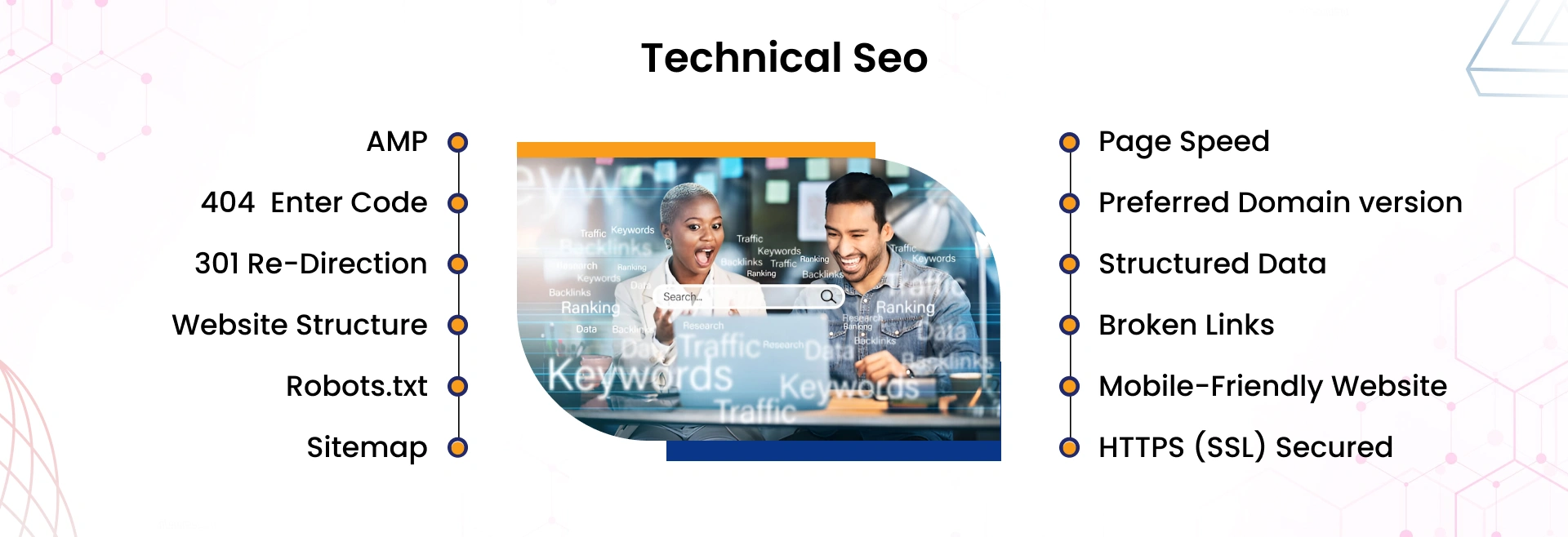
Off-page SEO improves your site's reputation by engaging in activities outside of your website. Earning high-quality backlinks from reputable healthcare websites and directories demonstrates authority to search engines. Managing online reviews and local citations improves your visibility and credibility. Building relationships through public relations and professional partnerships can help your brand's credibility and reach.
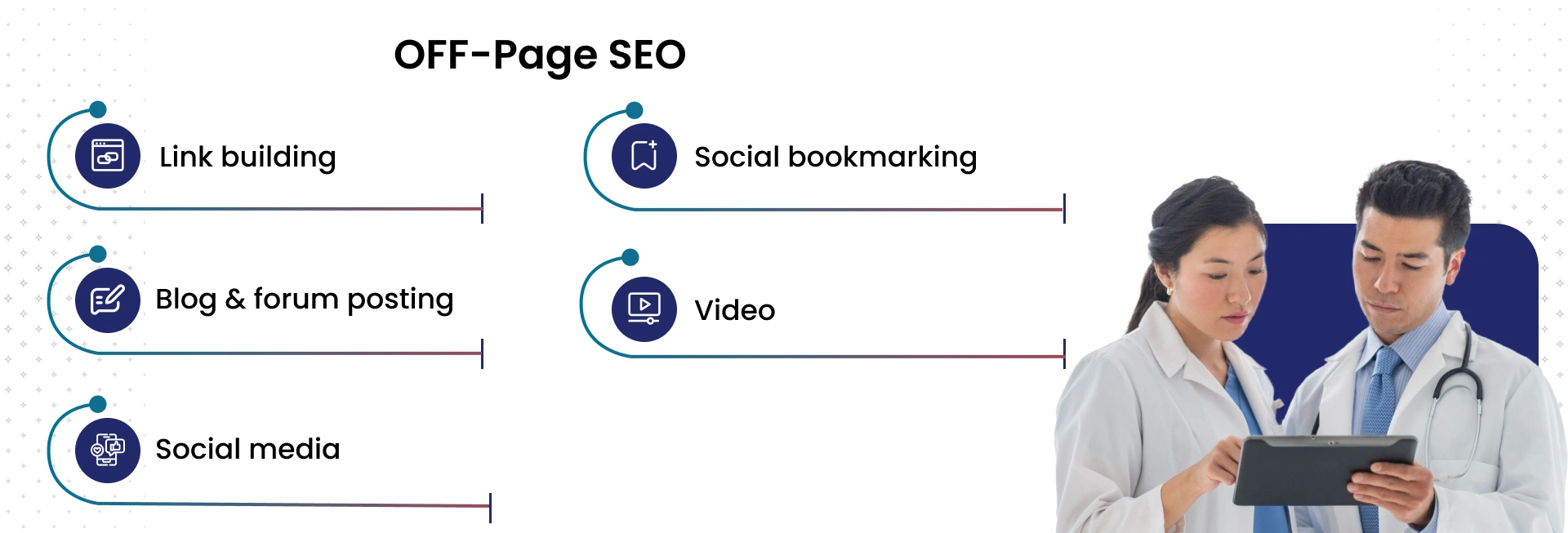
PPC campaigns provide an easy way to attract qualified leads and fill your appointment calendar. By targeting specific keywords and demographics, you can get your services in front of patients who are actively searching for help. To maximize your return on investment, effective PPC for healthcare requires compelling ad copy, optimized landing pages, and ongoing performance tracking.
Paid advertising also allows you to modify your strategy in real time, making it easier to respond to seasonal trends or shifts in patient demand. With careful monitoring, you can ensure that every dollar spent yields measurable results for your practice.
Among effective healthcare marketing techniques, Social media platforms are effective tools for fostering community, sharing knowledge, and engaging patients on a personal level. Using the appropriate platforms, such as Facebook, Instagram, LinkedIn, or TikTok, allows you to tailor your message to different audiences. Content ideas include everything from educational posts and health tips to patient testimonials and live Q&A sessions, all of which promote trust and loyalty.
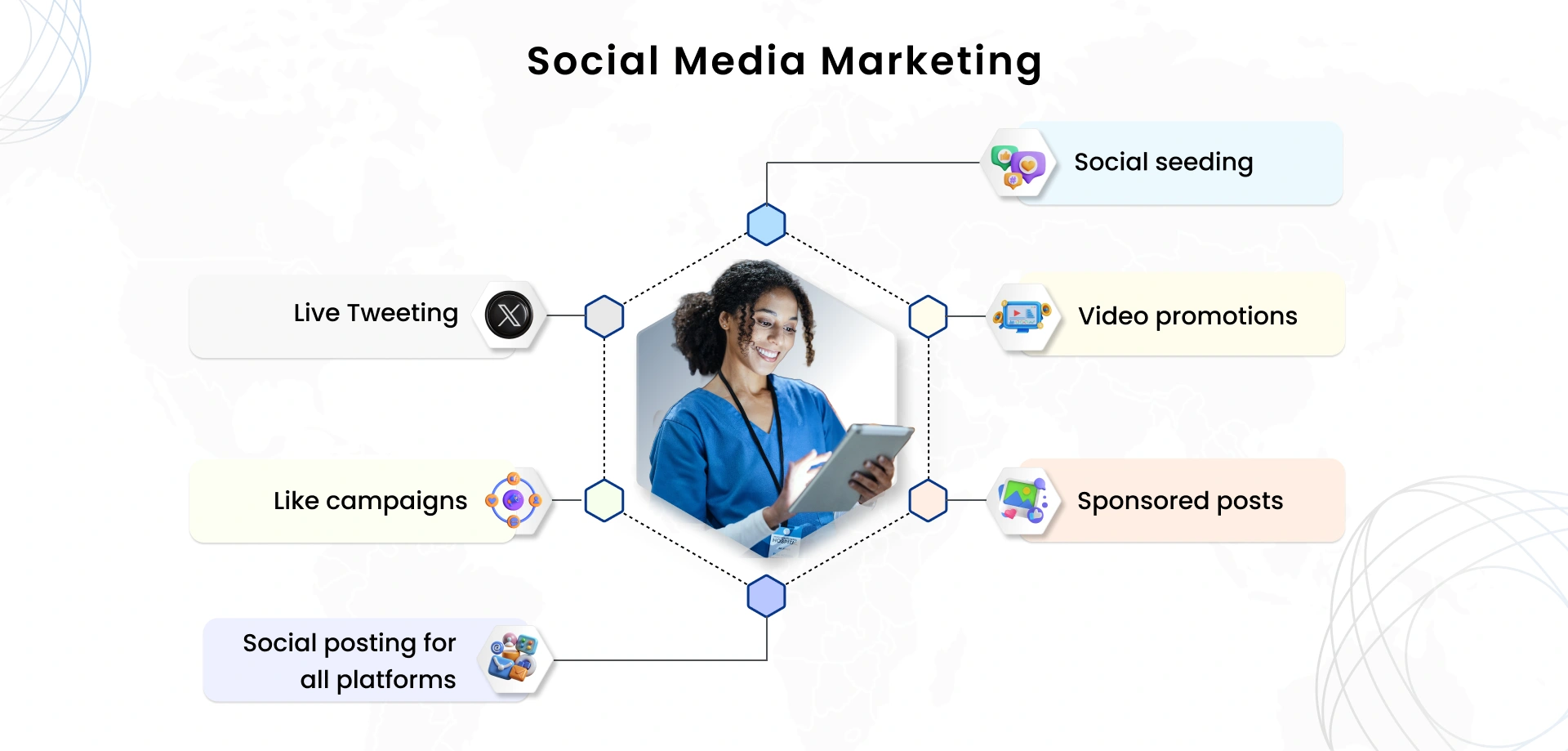
Social media success requires consistent, authentic engagement. Sharing real stories and answering questions humanizes your brand and fosters meaningful connections that go beyond the clinic.
Email marketing is still one of the most effective channels for building patient relationships and communicating timely information. Building compliant email lists and segmenting audiences based on interests or health needs enables you to send relevant, personalized content. Whether you're sending appointment reminders, educational newsletters, or wellness tips, your emails should always add value while respecting patient privacy.
Creating compelling subject lines and clear calls to action boosts open rates and encourages patients to take the next step. Consistency and compliance are critical for developing trust and maintaining audience engagement over time.
As your marketing strategies for healthcare organizations mature, moving beyond basic techniques and embracing approaches that provide more profound insights, seamless experiences, and strong reputation management is critical. Advanced tactics assist you in refining your outreach, tailoring patient interactions, and maintaining your organization's standing in a dynamic environment. Here's how to take your marketing strategy to the next level.
The use of analytics transforms guesswork into informed decision-making. You can use analytics tools to accurately measure campaign performance, track patient engagement, and calculate your return on investment. Platforms like Google Analytics, as well as CRM and conversation intelligence software, provide actionable insights into what works and where you can improve.
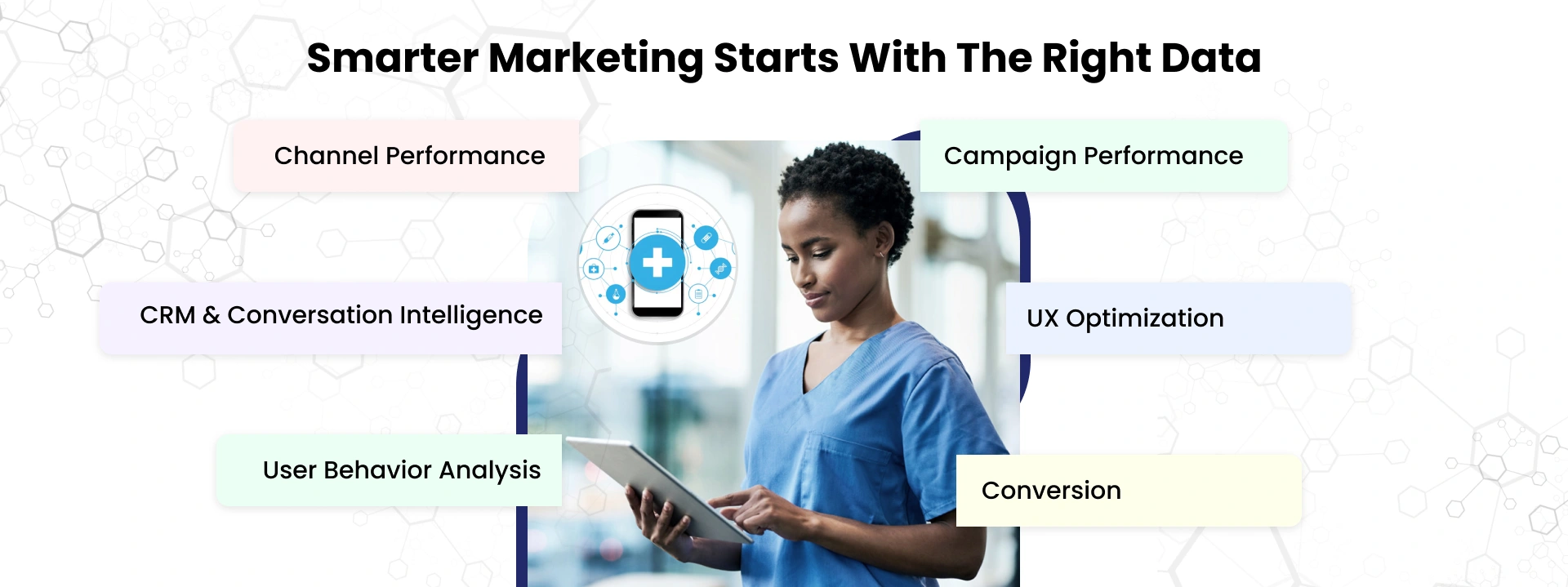
Data-driven marketing enables you to optimize all aspects of your healthcare marketing strategy, from ad targeting to patient communications. Understanding your target audience's behavior in greater detail will help you meet and exceed their expectations.

Today's patients expect a consistent experience across all touchpoints, whether online or offline. Integrating digital channels with in-person interactions makes every step, from initial research to follow-up care, feel connected and personalized. Automation and CRM systems enable the delivery of personalized messages, appointment reminders, and health resources based on each patient's individual journey.
An authentic omnichannel experience boosts satisfaction and strengthens loyalty. By meeting patients where they are and anticipating their needs, you can develop a cohesive, patient-centered approach that distinguishes your organization.
Reputation is one of your most valuable assets, and safeguarding it necessitates alertness and agility. Proactive reputation management entails closely monitoring online reviews, social media mentions, and news coverage to anticipate potential problems. Responding to all feedback, positive and negative, demonstrates your dedication to patient satisfaction and transparency.

When a crisis occurs, prompt and thoughtful communication is required. Addressing concerns directly, providing clear updates, and remaining professional can help you navigate negative press and rebuild trust. Consistent attention to your reputation ensures your organization's resilience, even in difficult times.
Staying ahead in healthcare marketing strategies requires adopting new technologies and adapting to changing patient preferences. The next wave of innovation is changing the way you engage, inform, and support your patients, both online and off. Here is a look at the trends that will shape the future of healthcare marketing.
Artificial intelligence is no longer a distant concept; it is actively changing the way you interact with patients and optimize your outreach. AI-powered predictive analytics can extract valuable insights from complex data, allowing you to anticipate patient needs and personalize communication at scale. This technology allows you to identify trends, refine your targeting, and make more informed decisions, reducing uncertainty and increasing the effectiveness of your healthcare marketing tactics.

Beyond marketing, artificial intelligence is revolutionizing patient care. AI-powered tools, such as real-time patient monitoring and tailored treatment plans, are making healthcare more responsive and personalized. As these systems evolve, incorporating AI into your marketing strategy will be critical for maintaining competitiveness and providing meaningful patient experiences.
Effective medical marketing strategies now must include telehealth services, which have evolved from a niche offering to an essential component of modern healthcare. Patients now expect virtual consultations, digital follow-ups, and health management apps, all of which can be easily integrated into your marketing strategy. Promoting telehealth services necessitates clear communication about accessibility, privacy, and the advantages of remote care, particularly for those living in underserved or rural areas.
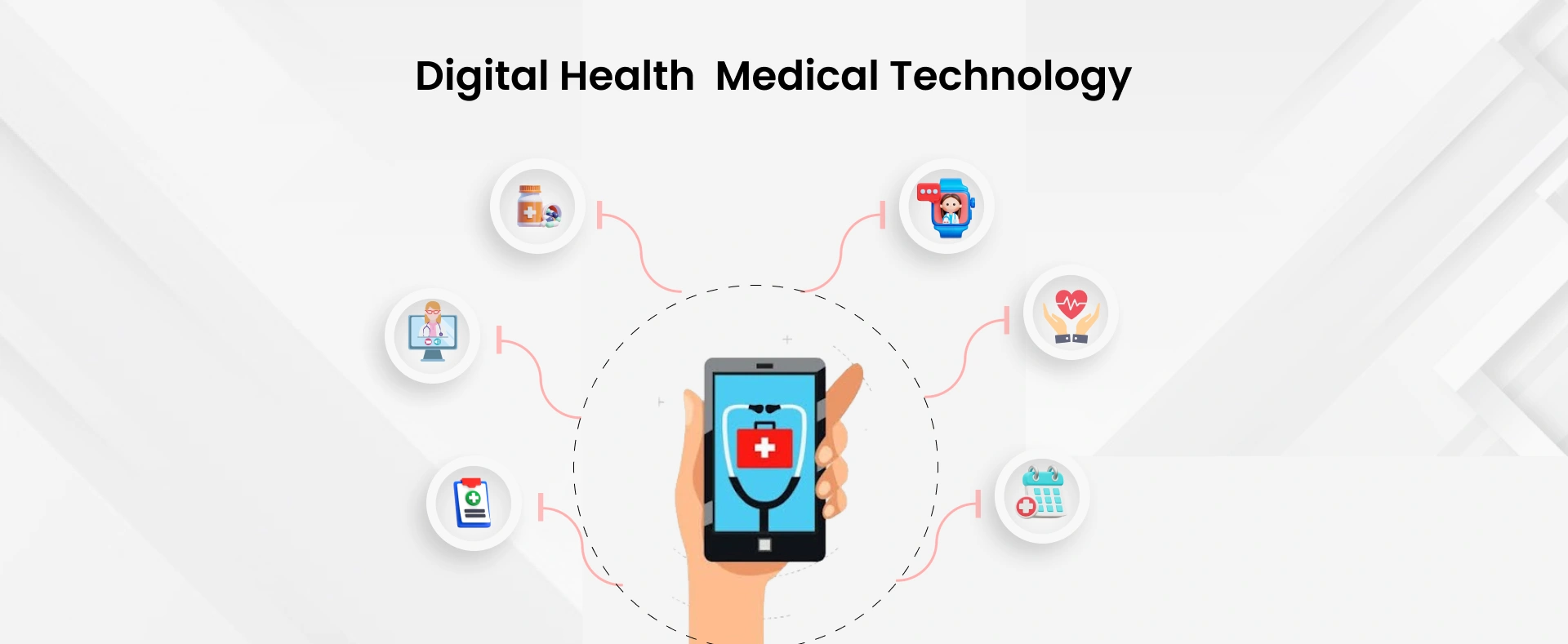
To succeed, concentrate on digital channels that cater to tech-savvy audiences, such as targeted SEO, social media campaigns, and educational video content. Highlighting patients' success stories and metrics can help increase trust and adoption. Addressing common concerns about technology and security promotes wider acceptance.
The digital landscape is rapidly evolving, and new platforms are altering how patients find and interact with healthcare providers. Voice search is on the rise, with more patients using conversational queries via smart speakers and mobile assistants. Optimizing your content for voice search by incorporating natural language, local keywords, and structured data can increase your visibility and make it easier for patients to find you.
AI chatbots and virtual assistants are also improving patient communication by answering frequently asked questions (FAQs) and scheduling appointments around the clock. Meanwhile, TikTok and Instagram are gaining popularity for health education, particularly among younger audiences who prefer short, engaging content. Staying agile and embracing these emerging technologies will allow you to meet patients where they are and position your company as a forward-thinking leader in healthcare marketing.
Your journey through healthcare marketing strategies has covered all of the essentials, from trust-building and digital tool integration to advanced analytics and future trend adaptation. Each element, whether foundational or cutting-edge, is critical to patient engagement and organizational success. According to research, combining marketing with strong financial and operational planning results in better patient outcomes, higher satisfaction, and increased efficiency.
Now is the time to evaluate your current marketing strategy and identify expansion opportunities. The healthcare industry is rapidly changing, with disruptive technologies and shifting consumer behaviors reshaping how you reach and serve patients. By remaining proactive and open to innovation, you can ensure that your strategy remains effective and future-proof.
If you need expert help to improve your healthcare marketing strategy, JanBask Digital Design provides tailored marketing strategies for healthcare organizations that combine industry knowledge and creative execution. Working with a dedicated team can help you navigate complexity, maximize your impact, and achieve measurable results, ensuring that your organization stands out for all the right reasons.
Get Expert Tips for Earning Patient Trust in a Digital Healthcare World!

C
This post hit all the major points—SEO, patient experience, email marketing, even reputation management. Solid stuff!
E
Great content! We used several ideas from this blog to boost our clinic’s online visibility. The section on patient reviews was especially helpful.
H
Very insightful. The content planning strategies gave us a roadmap we could actually follow. No jargon, just real solutions.